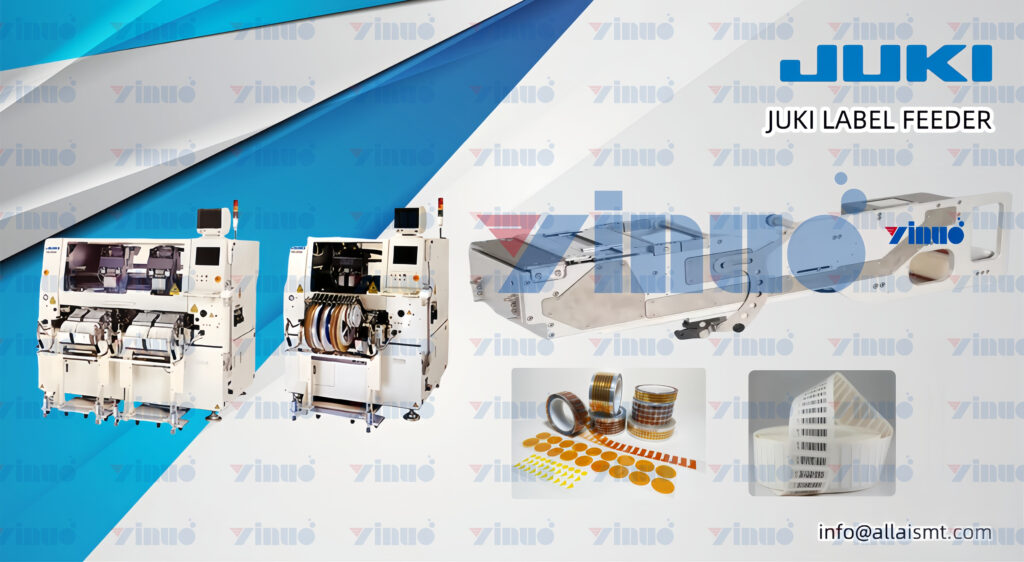Label Feeders: Improving the Speed of Packaging Lines
In the competitive landscape of manufacturing, the speed and efficiency of packaging lines are critical factors that can significantly impact a company’s productivity and profitability. One of the key technologies driving improvements in packaging speed is the use of label feeders. These automated systems streamline the labeling process, ensuring products are accurately and consistently labeled at high speeds. This article explores how label feeders enhance the speed of packaging lines, their benefits, and their role in modern manufacturing.
What are Label Feeders?
Label feeders are automated devices designed to apply labels to products or packaging materials efficiently and accurately. They are integral components of packaging lines across various industries, including food and beverage, pharmaceuticals, electronics, and consumer goods. By automating the labeling process, label feeders help reduce manual labor, minimize errors, and increase the overall speed of packaging operations.
How Label Feeders Improve Packaging Line Speed
- Automation of the Labeling Process
- Eliminating Manual Labor: Manual labeling is time-consuming and labor-intensive. Label feeders automate this process, significantly reducing the time required to label each product. This automation allows for continuous, high-speed operation, unlike manual processes that are subject to human limitations.
- Consistent High Speed: Automated label feeders can apply labels at a consistent speed, ensuring that the packaging line operates smoothly without the slowdowns that can occur with manual labeling.
- Integration with High-Speed Production Lines
- Seamless Integration: Label feeders can be seamlessly integrated into existing high-speed production lines. They are designed to work in tandem with other automated systems, ensuring that the entire packaging process runs efficiently.
- Synchronized Operations: These feeders can synchronize with other machinery on the production line, such as conveyors and fillers, to maintain a consistent workflow and prevent bottlenecks.
- Advanced Technology and Features
- High-Precision Sensors: Modern label feeders are equipped with high-precision sensors that detect product presence and positioning. This ensures that labels are applied accurately, even at high speeds.
- Quick Changeover Capabilities: Many label feeders feature quick changeover capabilities, allowing for rapid adjustments to accommodate different products and label sizes. This flexibility reduces downtime and keeps the production line running efficiently.
- Reduction of Downtime
- Continuous Operation: Automated label feeders are designed for continuous operation, reducing the need for frequent stops and starts. This continuous operation is essential for maintaining high production speeds.
- Minimized Maintenance Interruptions: Regular maintenance is crucial for any machinery, but label feeders are designed to require minimal maintenance, further reducing downtime and keeping the packaging line moving.
- Error Reduction
- Accurate Label Placement: Automated systems ensure that labels are placed accurately and consistently, reducing the time spent correcting errors or reworking mislabeled products.
- Real-Time Error Detection: Advanced label feeders are equipped with real-time error detection and correction mechanisms. These systems can identify and address issues immediately, preventing disruptions in the packaging process.
Benefits of Improved Packaging Line Speed
- Increased Production Capacity
- Higher Throughput: By increasing the speed of the packaging line, label feeders enable manufacturers to produce more units in a shorter amount of time. This higher throughput meets growing market demands and increases overall production capacity.
- Scalability: Enhanced speed allows for easy scalability, making it possible to ramp up production quickly in response to increased demand.
- Cost Savings
- Labor Cost Reduction: Automating the labeling process reduces the need for manual labor, leading to significant cost savings in wages and associated expenses.
- Efficiency Gains: Faster packaging lines reduce the per-unit cost of production, improving overall efficiency and profitability.
- Improved Product Quality and Consistency
- Consistent Labeling: Accurate and consistent labeling enhances product presentation and quality, contributing to better brand perception and customer satisfaction.
- Reduced Waste: Minimizing labeling errors reduces waste, leading to cost savings and more efficient use of resources.
- Enhanced Competitive Advantage
- Faster Time-to-Market: Increased packaging speed allows manufacturers to get products to market faster, providing a competitive edge in industries where speed is crucial.
- Adaptability: The ability to quickly adapt to different products and label types allows manufacturers to respond more effectively to changing market demands and consumer preferences.
Conclusion
Label feeders are transformative tools that significantly enhance the speed and efficiency of packaging lines. By automating the labeling process, reducing downtime, and integrating seamlessly with high-speed production lines, these devices help manufacturers increase production capacity, reduce costs, and improve product quality. In today’s fast-paced manufacturing environment, the adoption of advanced technologies like label feeders is essential for maintaining a competitive edge and meeting the high standards of efficiency and accuracy demanded by the market. As technology continues to evolve, the role of label feeders in improving packaging line speed will only become more critical, driving further advancements in manufacturing efficiency and productivity.

